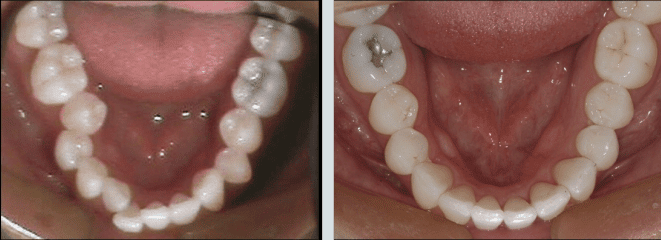Is Invisalign right for your dental misalignment? What applies to someone else may not be true for you.
Crooked teeth and jaw pain are the most common symptoms of dental misalignment. However, everyone has a unique set of dental anatomy. What works for others may not work for you. This three part article aims to help you, and specifically YOU to determine whether Invisalign is right for you. In part I, we will show you different types of dental misalignment, and the results after treatment.
1. Crowding: Crowding is one of the most common dental misalignment. It occurs when there is not enough room for all the teeth. As a result, the teeth protrude, intrude, or rotate as they are being pushed against each other.

Severe Crowding
2.Spacing: Spacing is the opposite of crowding. It occurs when your teeth fail to fill all the space in your mouth. The most common type of spacing is diastema, which is spacing between upper incisors.

Spacing in the upper incisor. This is called diastema.
3.Deep Bite: Deep bite is defined by overlapping of the upper and lower teeth. In more severe cases, the lower teeth come in contact with the upper gum, resulting in damaging the gum tissue and roots of the upper teeth.

A combination of deep bite and crowding
4.Open Bite: Open bite occurs when both upper and lower teeth protrude outwards. When biting down fully on back molars, front teeth fail to make contact with each other.

Open Bite
5.Cross Bite: Your upper teeth should protrude slightly more outwards than your lower teeth. When one or more lower teeth protrude more outwards than your upper teeth, the condition is called cross bite.

Cross bite on upper teeth
6.Edge to edge bite: Edge to edge bite occurs when upper and lower incisors make contact on the edge when biting down.
7. Excessive Overjet:Excessive overjet occurs when upper front teeth protrudes out at an angle, and are overlapping with the lower teeth horizontally.
If you have one or more of the conditions mentioned above, you can definitely benefit from Invisalign. Click here to schedule a free consultation.
Malocclusion can get worse over time, so don’t wait!
In the next part of the article, we will talk about the conditions that can potentially make you an unsuitable candidate for Invisalign.
Continue to “Is Invisalign right for me? Part 2”

